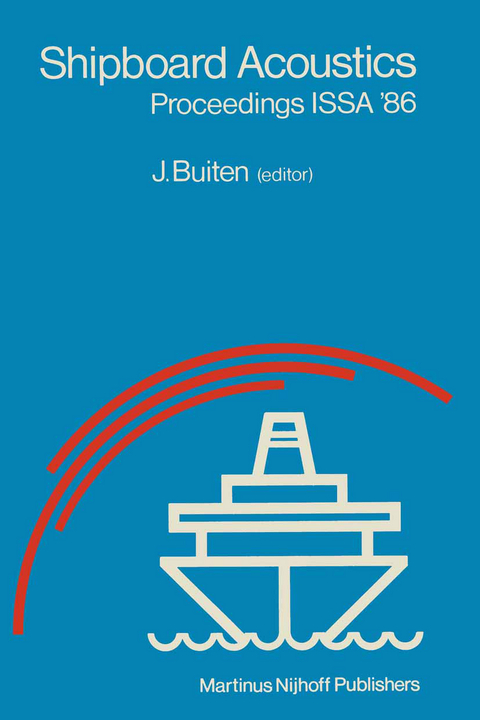
Shipboard Acoustics
Springer (Verlag)
978-94-010-8070-5 (ISBN)
1. Prediction Method for the Acoustic Source Strength of Propeller Cavitation.- 2. Propeller Induced Noise and Vibration Reduction: Acquired Experience in Design and Testing Approach.- 3. Experimental and Analytical Aspects of Propeller Induced Pressure Fluctuations.- 4. Model and Full Scale Measurements of Propeller Cavitation Noise on an Oceanographic Research Ship with Two Different Types of Screw Propeller.- 5. A Study of Simulation and Elimination of Propeller Singing.- 6. Propeller Noise: Some Topics from the Activities of Brodarski Institute.- 7. Some Experiments on the Transmission of Propeller Cavitation Noise into the Ship’s Structure.- 8. Quiet High-Speed Yachts and Water Jet Applications.- 9. Model-Scale Measurements of the Transmission and Radiation of Hull-Borne Vibrational Energy Using Frequency/Wavenumber Analysis.- 10. Underwater Noise Radiation Due to Transmission through the Cooling Water System of a Marine Diesel Engine.- 11. Measurements of Underwater Acoustic Intensity in the Nearfield of a Point Excited Periodically Ribbed Cylinder.- 12. Sound Generation from a Moving Shell.- 13. Low Noise Levels as the First Task of a Vessel. A Description and Some Remarks about Acoustic Quieting Design Criteria and Features of Saclant ASW Centre Oceanographic Research Vessel.- 14. Ship Noise Criteria. Do They Reflect the Present Level of Noise Reduction Technology?.- 15. A Literature Survey Concerning Propeller as a Noise Source and Prediction Methods of Structure-Borne Noise in Ships.- 16. Applications of Two Mathematical Approaches to Predict Airborne Noise Levels in Ship Superstructures.- 17. Some Observations on the Achievable Properties of Diesel Isolation Systems.- 18. Acoustic Transfer Functions of Flexible Shaft Couplings; Measurement Method andResults.- 19. Random Vibration of Multiterminal Mechanical Systems.- 20. The Influence of the Internal Impedance on Vibration Reduction.- 21. Main Propulsion Diesel Generator Sets with Acoustic Enclosure and Double Resilient Mounting for Low Noise Application.- 22. Flexural Wave Damping in Ship Hulls, Decks and Bulkheads.- 23. Determination of Acoustic Properties of Ship’s Sound Reducing Floors.- 24. Study of Structure-Borne Noise Transmission Inside Cabins by Sound-Intensity Measurements.- 25. Experiments on Sound Reducing Floors Including Visco-Elastic-Damping on Board a Rhine Cruise Vessel.
| Zusatzinfo | XI, 576 p. |
|---|---|
| Verlagsort | Dordrecht |
| Sprache | englisch |
| Maße | 155 x 235 mm |
| Themenwelt | Mathematik / Informatik ► Informatik |
| Naturwissenschaften ► Physik / Astronomie ► Mechanik | |
| Technik ► Elektrotechnik / Energietechnik | |
| Technik ► Maschinenbau | |
| ISBN-10 | 94-010-8070-4 / 9401080704 |
| ISBN-13 | 978-94-010-8070-5 / 9789401080705 |
| Zustand | Neuware |
| Haben Sie eine Frage zum Produkt? |
aus dem Bereich


